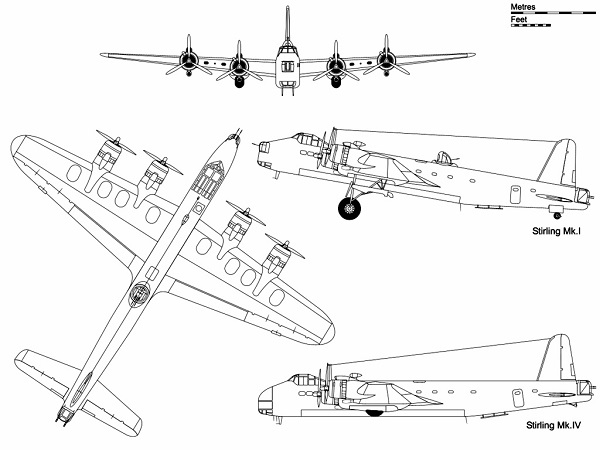
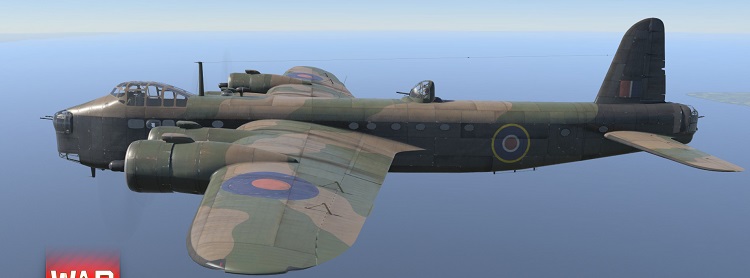
The Short Stirling was a British four-engined heavy bomber of the Second World War. It has the distinction of being the first four-engined bomber to be introduced into service with the Royal Air Force (RAF).
The Stirling was designed during the late 1930s by Short Brothers to conform with the requirements laid out in Air Ministry Specification B.12/36. Prior to this, the RAF had been primarily interested in developing increasingly capable twin-engined bombers but had been persuaded to investigate a prospective four-engined bomber as a result of promising foreign developments in the field. Out of the submissions made to the specification, Supermarine proposed the Type 317 which was viewed as the favourite, while Short's submission, named the S.29, was selected as an alternative. When the preferred Type 317 had to be abandoned, the S.29, which later received the name Stirling, proceeded to production.
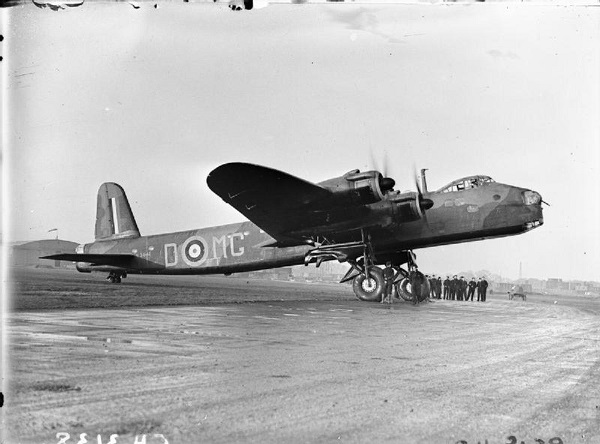
During early 1941, the Stirling entered squadron service. During its use as a bomber, pilots praised the type for its ability to out-turn enemy night fighters and its favourable handling characteristics, while the altitude ceiling was often a subject of criticism. The Stirling had a relatively brief operational career as a bomber before being relegated to second line duties from late 1943. This was due to the increasing availability of the more capable Handley Page Halifax and Avro Lancaster, which took over the strategic bombing of Germany. Decisions by the Air Ministry on certain performance requirements, such as to restrict the wingspan of the aircraft to 100 feet, had played a role in limiting the Stirling's performance; these restrictive demands had not been placed upon the Halifax and Lancaster bombers.
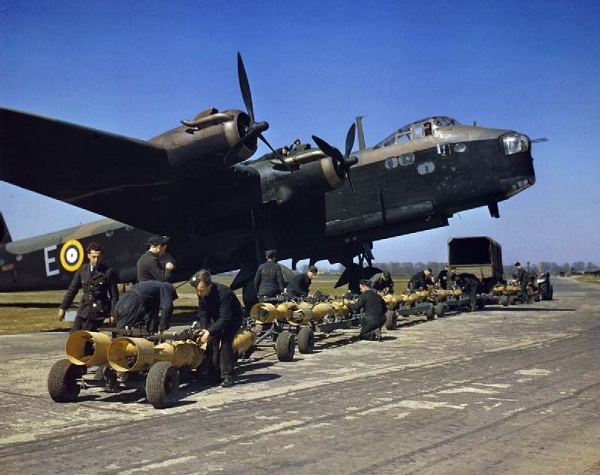
During its later service, the Stirling was used for mining German ports; new and converted aircraft also flew as glider tugs and supply aircraft during the Allied invasion of Europe during 1944–1945. In the aftermath of the Second World War, the type was rapidly withdrawn from RAF service, having been replaced in the transport role by the Avro York, a derivative of the Lancaster that had previously displaced it from the bomber role. A handful of ex-military Stirlings were rebuilt for the civil market.
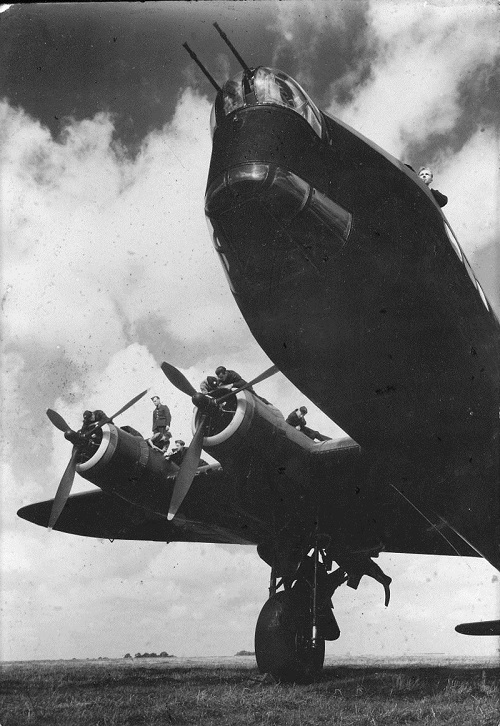
Crew: (First and second pilot, navigator/bomb aimer, front gunner/WT operator, two air gunners, and flight engineer)]
Length: 87 ft 3 in (26.59 m)
Wingspan: 99 ft 1 in (30.20 m)
Height: 22 ft 9 in (6.93 m)
Wing area: 1,460 sq ft (136 m2) ]
Aspect ratio: 6.5:1
Empty weight: 49,600 lb (22,498 kg)
Gross weight: 59,400 lb (26,943 kg)
Max takeoff weight: 70,000 lb (31,751 kg)
Powerplant: 4 × Bristol Hercules II
Propellers: 3-bladed metal fully feathering propeller, 13 ft 6 in (4.11 m) diameter
Maximum speed: 282 mph (454 km/h; 245 kn) at 12,500 ft (3,800 m)
Cruise speed: 200 mph (322 km/h; 174 kn)
Range: 2,330 mi (2,025 nmi; 3,750 km)
Service ceiling: 16,500 ft (5,000 m)
Rate of climb: 800 ft/min (4.1 m/s)
Guns: 8 x 0.303 in (7.7 mm) Browning machine guns: 2 in powered nose turret, 4 in tail turret, 2 in dorsal turret
Bombs: Up to 14,000 lb (6,350 kg) of bombs
